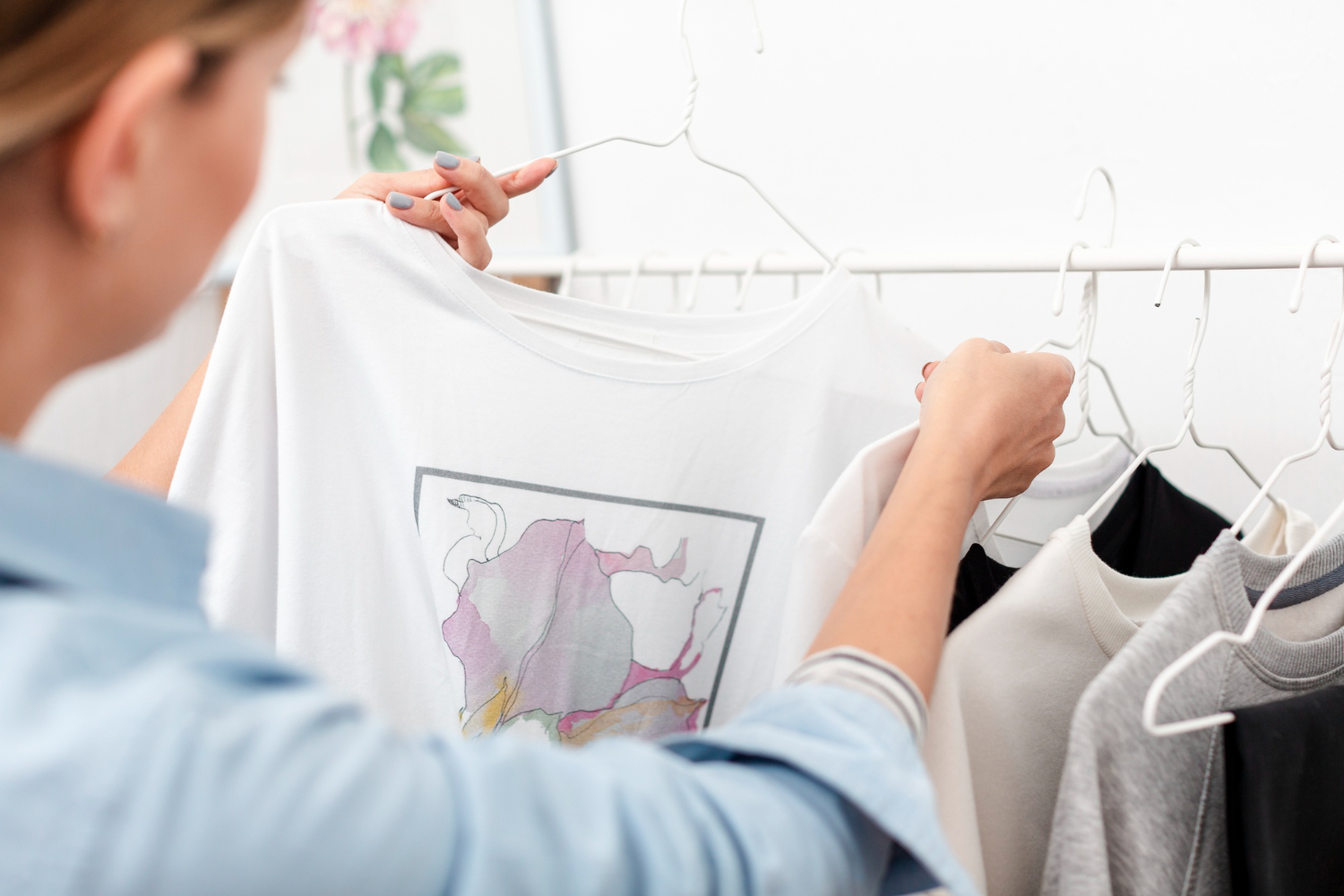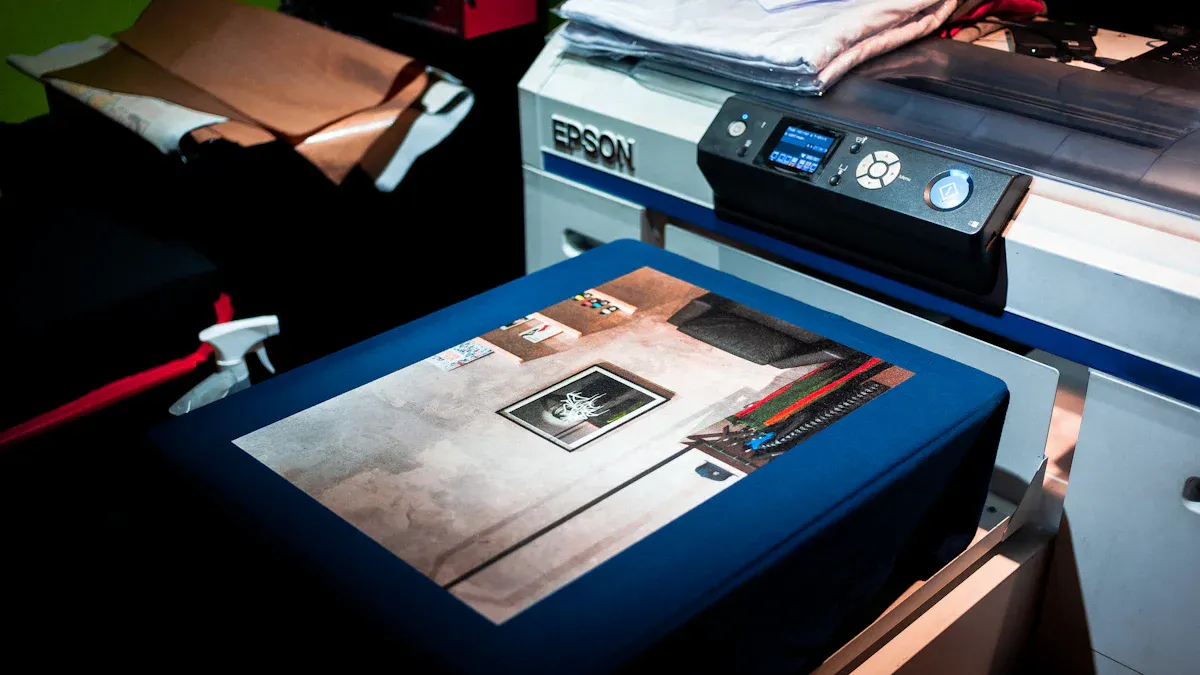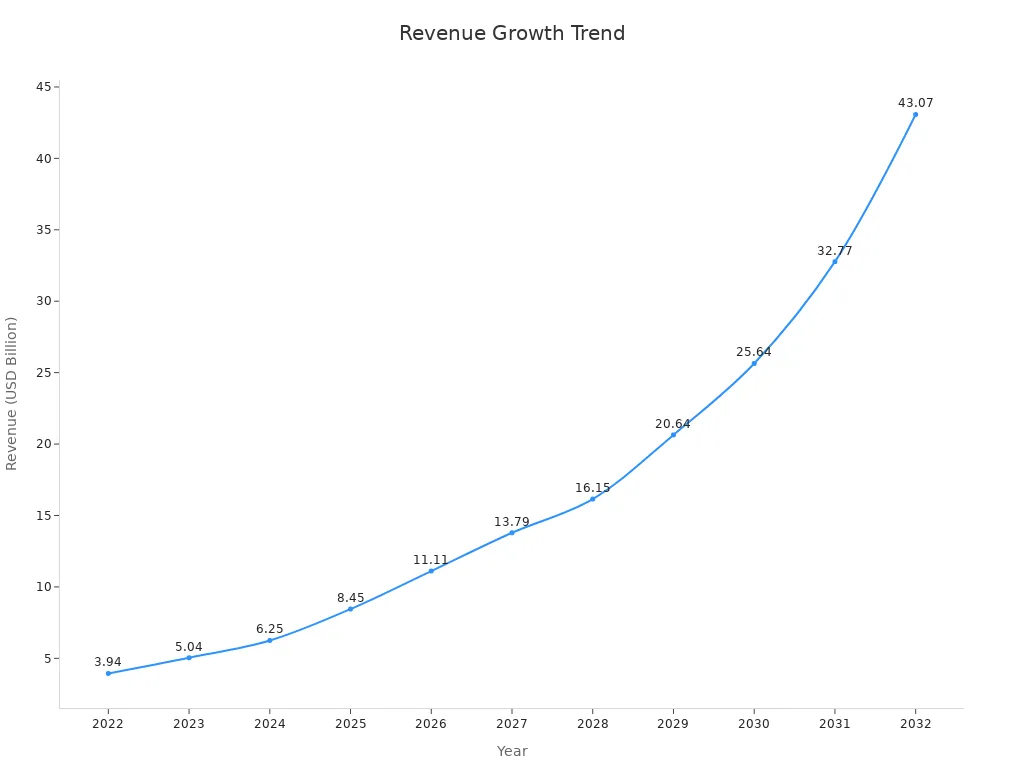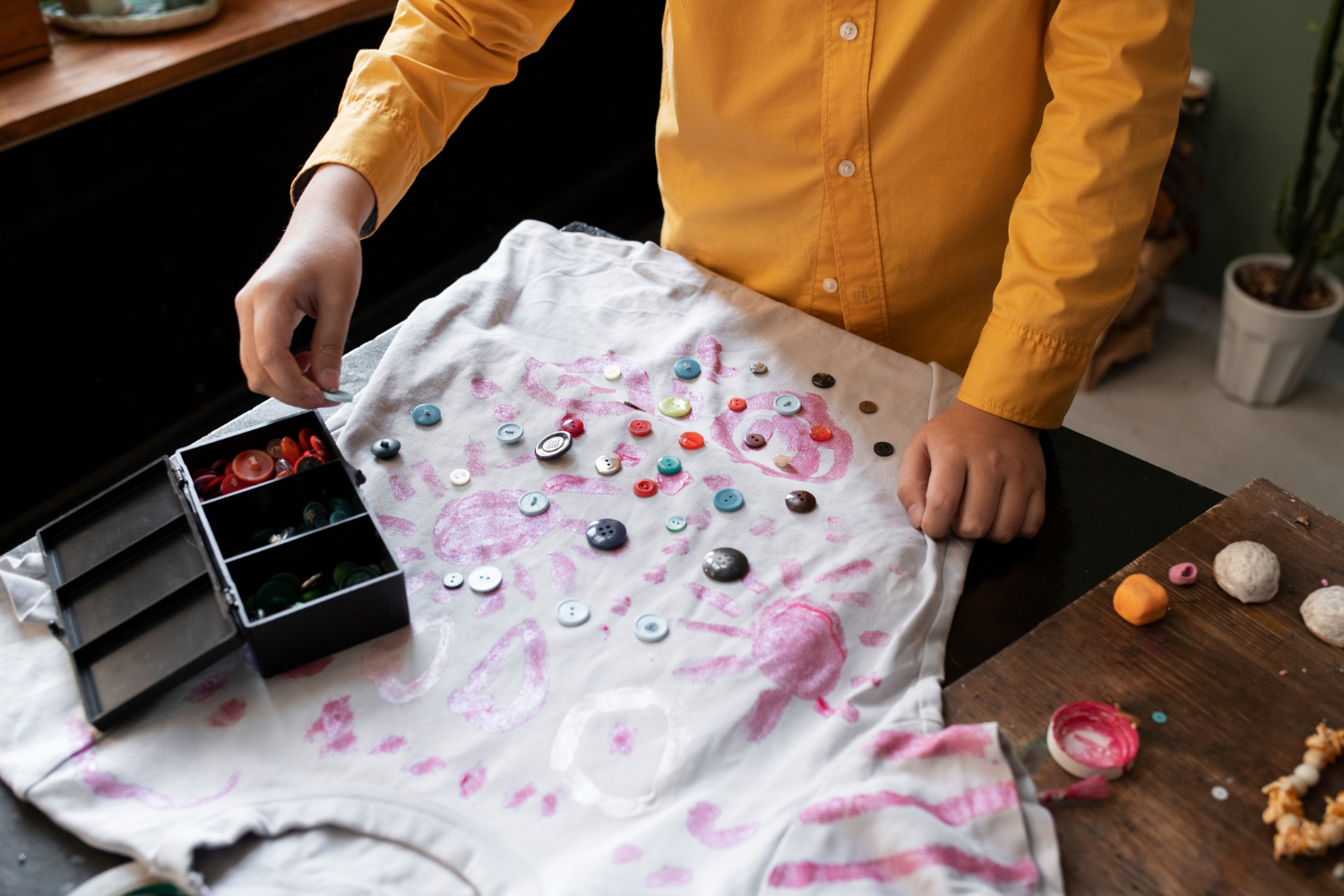Print on Demand or DIY Production Methods for Custom Products

Are you wondering whether to choose print on demand or DIY production for your custom product production methods? Understanding these methods is key to success. Print on demand, offers scalability and reduced costs. DIY, however, gives you hands-on control. Your choice depends on time, cost, and customization needs.
Understanding Print on Demand

Definition of Print on Demand
Print on demand is a business model that allows you to sell custom products without holding inventory. It’s a system where white-label products—items created by one company but sold under another’s brand—are customized and shipped directly to your customers. This method is perfect for meeting the growing demand for personalized merchandise. Quality control plays a big role here, ensuring that every product meets your brand’s standards and keeps your customers happy.
How Print-on-Demand Works
The print-on-demand process is designed for efficiency and speed. Here’s how it typically works:
Order Integration: When a customer places an order, it’s automatically integrated into the system. This ensures smooth file handoff and groups similar orders for efficiency.
Gang Runs: Orders are scheduled into gang runs every 24 hours, allowing continuous operation.
Printing: These grouped orders are printed within 24 hours.
Bindery and Shipping Preparation: By day two or three, the printed items are prepared for shipping.
Shipping: Within three to four days, the completed products are shipped to your customers.
This streamlined process reduces manual errors, speeds up delivery, and keeps your customers satisfied. It also makes scaling your business easier without needing to hire more staff or invest in additional resources.
Benefits of Print on Demand for Customization
Print on demand offers several advantages when it comes to customization. First, it allows you to create unique designs tailored to your audience without the need for large upfront investments. You can experiment with different styles, slogans, or artwork to see what resonates most with your customers.
The market for print-on-demand services is growing rapidly, driven by the increasing demand for personalized products. In fact, the industry is projected to grow at a compound annual growth rate (CAGR) of 27.8%, with revenue expected to reach $43.07 billion by 2032.

Additionally, print-on-demand systems are highly efficient. They minimize waste, reduce costs, and allow you to focus on marketing and design rather than production logistics. This makes it an excellent choice for businesses looking to offer custom products while staying agile and competitive.
Exploring DIY Production

Definition of Do It Yourself Production
Do it yourself, or DIY, production refers to creating or customizing products without relying on external manufacturers. It’s a hands-on approach where you take control of the entire process, from design to production. This method is popular across industries.
DIY production empowers you to create unique customization options tailored to your needs, making it a great choice for custom products.
Advantages of DIY for Custom Product Production
DIY production offers several benefits, especially when it comes to customization and flexibility:
Feature | Description |
|---|---|
Design Freedom | You can create bespoke products tailored to specific needs. |
Cost Efficiency | DIY often reduces costs by eliminating unnecessary features or outsourcing. |
Rapid Prototyping | Quickly test ideas and refine designs without waiting for external suppliers. |
Extensive Customization Options | Adjust colors, sizes, and other features to match your vision. |
Expert Integration Support | Seamlessly incorporate your creations into existing projects. |
Comparing Key Factors in Custom Product Production Methods
Time Commitment
Time is one of the most critical factors when choosing between print-on-demand and DIY production methods. With print-on-demand, you save significant time because the service handles everything—from printing to shipping. Once you upload your designs and set up your store, the process runs almost automatically. This gives you more time to focus on marketing or creating new designs.
On the other hand, DIY production demands a hands-on approach. You’ll spend hours designing, sourcing materials, and producing each item. While this method offers unmatched flexibility, it can quickly become overwhelming, especially if you’re juggling multiple orders. If you’re short on time or managing a growing business, print-on-demand might be the better fit.
Cost Considerations
Cost plays a huge role in deciding which production method suits your needs. Print-on-demand eliminates upfront costs like inventory storage or bulk manufacturing. You only pay for what you sell, making it a low-risk option for beginners. However, the per-unit cost can be higher compared to DIY production, especially if you’re selling in large volumes.
DIY production offers cost efficiency in the long run. By sourcing materials and producing items yourself, you can cut out middlemen and reduce expenses. But keep in mind, the initial investment in equipment and materials can be steep. Plus, if you’re not careful, mistakes during production can lead to wasted resources, driving up your overall cost.
Scalability and Growth Potential
Scalability is where print-on-demand truly shines. This production method allows you to grow your business without worrying about inventory or production bottlenecks. Print-on-demand services streamline production by eliminating the need for inventory management, reducing risks like overstocking or understocking. With a global network of printing facilities, you can scale quickly and even reach international markets.
Metric | Print on Demand (POD) | Do It Yourself (DIY) |
|---|---|---|
Scalability | Easily scalable with a global network of printing facilities | Limited by your own production capacity and may require further investments |
DIY production, while offering control, has limited scalability. As your business grows, you’ll need to invest in more equipment, materials, and possibly additional staff. This can slow down your growth and make it harder to meet increasing demand. If rapid expansion is part of your plan, print-on-demand is the more practical choice.
Quality Control and Customization
Quality control is another area where these two methods differ significantly. Print-on-demand services use advanced equipment and skilled professionals to ensure high-quality printing and production standards. This consistency helps you meet customer expectations and maintain your brand’s reputation.
Method | Quality Control Aspects | Notes |
|---|---|---|
Print on Demand | High-quality printing and production standards, advanced equipment, skilled professionals | Ensures consistency and meets customer expectations. |
DIY Production | Varies widely based on individual skills and equipment | Quality can be inconsistent and heavily reliant on the individual's capabilities. |
With DIY production, quality depends entirely on your skills and the tools you use. While this gives you full control over the process, it also means that mistakes can happen, leading to inconsistent results. To ensure the best outcomes, you’ll need to invest time in perfecting your craft and possibly upgrading your equipment.
Pro Tip: If you choose print-on-demand, take time to find the right service provider. Request proofs during the ordering process and order samples to assess shipping and print quality.
Space and Storage Requirements
Space is often an overlooked factor when deciding on a production method. Print-on-demand eliminates the need for storage entirely. Since products are made to order, you don’t have to worry about renting a warehouse or finding room in your home for inventory. This makes it an ideal choice for small businesses or entrepreneurs working from home.
DIY production, however, requires significant space. You’ll need room for equipment, raw materials, and finished products. If you’re working on a large scale, storage can quickly become a challenge. Renting additional space or reorganizing your home might be necessary, which adds to your overall costs and logistical concerns.
Pros and Cons of Print on Demand
Advantages of Print on Demand
Print on demand makes it easy for you to start selling custom products without the hassle of managing inventory. You can upload your unique designs, and the service takes care of the rest—printing, packaging, and shipping. This hands-off approach saves you time and lets you focus on what you do best: creating new designs and marketing your brand.
Another big advantage is scalability. Whether you’re selling one item or a thousand, print-on-demand services can handle it. You don’t need to worry about running out of stock or overproducing. Plus, you can test new ideas quickly. Want to see if a new design resonates with your audience? Add it to your store and wait for feedback.
Print-on-demand services also help you maintain quality. They use professional-grade equipment to ensure your products look polished and meet customer expectations. This is especially important when you’re competing in a crowded market.
Pro Tip: Use print-on-demand to experiment with seasonal or trending designs. It’s a low-risk way to keep your catalog fresh and exciting.
Disadvantages of Print on Demand
While print on demand offers convenience, it’s not without its downsides. One of the biggest challenges is the cost. The per-unit price is often higher compared to bulk production. If you’re selling in large volumes, this can eat into your profit margins.
You also have less control over the production process. The service handles everything, which means you can’t oversee the quality firsthand. If a product doesn’t meet your standards, it could lead to customer complaints.
Shipping times can be another issue. Since products are made to order, it may take longer for customers to receive their items. This can be a drawback if your audience expects fast delivery.
Lastly, customization options might be limited. While print-on-demand services excel at printing unique designs, they may not offer the same level of flexibility as DIY production. For example, you might not be able to add special finishes or use unconventional materials.
Note: If you’re comparing print-on-demand vs dropshipping, remember that print on demand gives you more control over branding but may have higher costs.
Pros and Cons of DIY Production
Advantages of DIY Production
DIY production gives you complete control over your creative process. You can design, produce, and customize products exactly how you envision them. This hands-on approach allows you to create unique items that stand out in the market.
A 167% increase in conversion rates occurs when shoppers engage with user-generated content (UGC) tied to DIY products.
DIY products lead to a 250% increase in revenue per visitor (RPV).
Consumers often perceive customized products as higher in value, which can boost their willingness to pay and improve your profit margins.
Another advantage is the flexibility DIY offers. You can experiment with materials, colors, and designs without waiting on external suppliers. This freedom makes it easier to adapt to trends or customer feedback. Plus, you can ensure the quality of every product since you oversee the entire process.
Tip: DIY production works best when you’re passionate about your craft and want to offer something truly unique.
Disadvantages of DIY Production
While DIY production has its perks, it also comes with challenges. One major drawback is the time commitment. Producing items yourself can be incredibly time-consuming, especially if you’re handling multiple orders. This can limit your ability to scale your business.
Cost is another factor to consider. Although DIY can save money in the long run, the initial investment in tools, materials, and workspace can be steep. Revenue and cash flow may also become unpredictable due to changing market conditions.
Some costs, like your time or effort, aren’t easily quantifiable.
Forecasting long-term expenses or risks can be tricky, making it harder to plan effectively.
Misleading data or unexpected variables can lead to flawed decisions.
Lastly, maintaining consistent quality can be a challenge. Your skills and equipment directly impact the final product. If you’re not careful, mistakes can lead to wasted materials and dissatisfied customers.
Note: DIY production requires a balance of creativity and efficiency. If you’re struggling to keep up, consider outsourcing parts of the process.
Choosing the Right Method for Your Business Needs
When Print on Demand is Ideal
Print on demand works best when you want to start a business with minimal upfront investment. It’s perfect for situations where you don’t want to deal with inventory or storage. If you’re looking to test new ideas quickly, this method lets you experiment without committing to large production runs.
Here’s when print on demand shines:
You’ve identified a profitable niche with low competition.
You’re using tools like Google Trends or social media analytics to understand customer preferences.
You’ve partnered with a reliable print-on-demand supplier for high-quality products and dependable fulfillment.
Investing in advanced printing technology and automation tools can drastically reduce production times while maintaining high quality.
Modern printing equipment is transforming how businesses approach efficiency. It allows for a wider range of styles and materials, opening up new opportunities for customization. If your goal is to scale quickly and reach a broad audience, print on demand is the way to go.
When DIY Production is the Better Choice
DIY production is ideal when you want complete control over your creative process. If you’re passionate about crafting unique products and enjoy hands-on work, this method gives you the freedom to bring your vision to life. It’s also a great choice if you’re targeting a niche market that values exclusivity and personalization.
DIY production works well in these scenarios:
You want creative control over every aspect of your product.
You’re producing small batches or one-of-a-kind items.
You have the time and resources to invest in tools, materials, and workspace.
This method lets you experiment with unconventional materials and designs. You can adapt quickly to trends or customer feedback, ensuring your products stay fresh and relevant. However, keep in mind that DIY production requires a significant time commitment. If you’re juggling multiple orders, it might limit your ability to scale your business.
Combining Print on Demand and DIY Production Methods
Why choose one method when you can combine both? Mixing print on demand and DIY production lets you enjoy the best of both worlds. You can use print on demand for scalable products while reserving DIY for exclusive, high-value items.
For example, you could offer a line of print-on-demand products for general customers and create limited-edition DIY items for loyal fans. This approach helps you balance efficiency with personalization. It also allows you to test new ideas through print on demand while maintaining creative control over your DIY projects.
Tip: Use print on demand for order fulfillment and DIY for customizations that require a personal touch.
Combining these methods can also help you manage time better. You can focus on growing your business while outsourcing repetitive tasks to print-on-demand services. This hybrid strategy is perfect for entrepreneurs who want to scale without sacrificing quality or creativity.
Launch Your Print-on-Demand Business with Yoycol
Explore the benefits of print-on-demand (POD) versus DIY production, and discover the right path for your brand. For creators and entrepreneurs choosing POD, Yoycol delivers a streamlined solution with 1,000+ customizable products.
Yoycol offers professional sportswear, all-over-print apparel, bags, shoes, mugs, home decor, and more. Skip inventory costs and upfront investments—simply upload your designs, and we handle the rest.
Grow your business with confidence:
High-quality printing and durable materials
Efficient order fulfillment to customers worldwide
Regular updates to our product catalog
Start your risk-free journey today. Sign up with Yoycol and turn ideas into products effortlessly!

